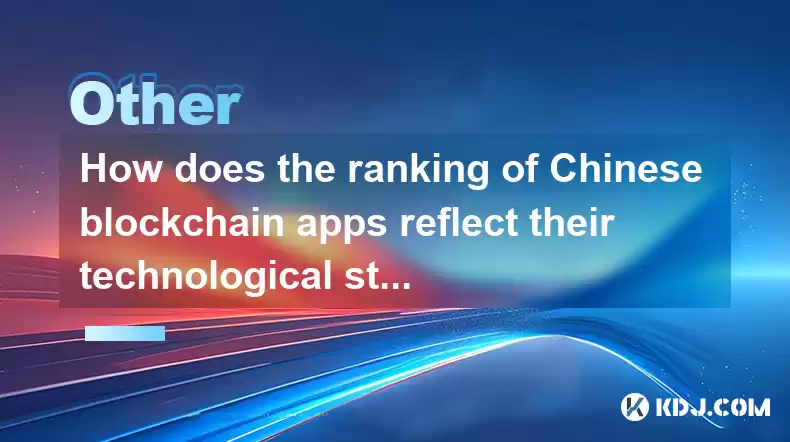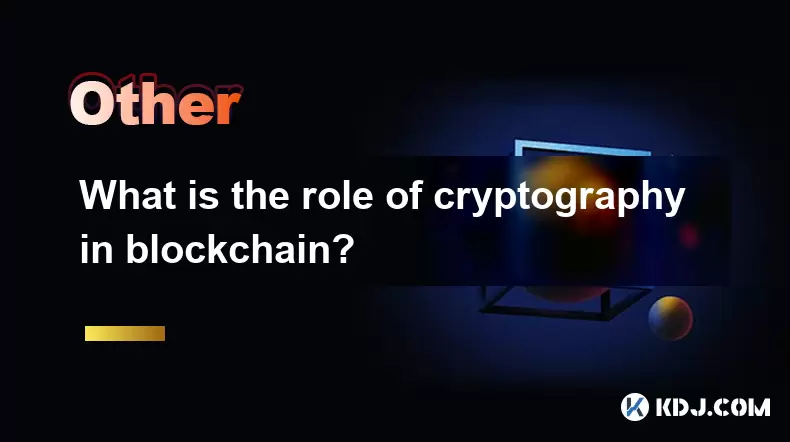-
 Bitcoin
Bitcoin $113900
0.47% -
 Ethereum
Ethereum $3491
-0.42% -
 XRP
XRP $2.876
-1.87% -
 Tether USDt
Tether USDt $1.000
0.03% -
 BNB
BNB $750.4
-0.49% -
 Solana
Solana $161.3
-1.76% -
 USDC
USDC $0.9999
0.01% -
 TRON
TRON $0.3242
-0.91% -
 Dogecoin
Dogecoin $0.1985
-0.19% -
 Cardano
Cardano $0.7241
1.49% -
 Hyperliquid
Hyperliquid $38.05
0.56% -
 Stellar
Stellar $0.3896
2.92% -
 Sui
Sui $3.442
0.61% -
 Chainlink
Chainlink $16.18
0.92% -
 Bitcoin Cash
Bitcoin Cash $541.0
0.51% -
 Hedera
Hedera $0.2427
2.67% -
 Ethena USDe
Ethena USDe $1.001
0.03% -
 Avalanche
Avalanche $21.39
-0.68% -
 Toncoin
Toncoin $3.669
2.25% -
 Litecoin
Litecoin $109.5
0.95% -
 UNUS SED LEO
UNUS SED LEO $8.966
0.11% -
 Shiba Inu
Shiba Inu $0.00001218
0.77% -
 Polkadot
Polkadot $3.598
1.23% -
 Uniswap
Uniswap $9.164
1.14% -
 Monero
Monero $297.7
1.21% -
 Dai
Dai $1.000
0.00% -
 Bitget Token
Bitget Token $4.328
0.84% -
 Pepe
Pepe $0.00001047
1.05% -
 Cronos
Cronos $0.1329
0.70% -
 Aave
Aave $257.6
1.03%
How does the ranking of Chinese blockchain apps reflect their technological strength?
Chinese blockchain apps like Neo and Conflux rank high due to their fast transaction speeds and innovative consensus mechanisms, reflecting their technological strength.
Apr 15, 2025 at 12:01 pm

The ranking of Chinese blockchain apps often serves as a barometer of their technological strength, market influence, and user adoption. These rankings are influenced by several factors, including the app's underlying technology, its performance metrics, user base, and the innovative features it offers. In this article, we will explore how these rankings reflect the technological prowess of Chinese blockchain apps, examining specific examples and the criteria used to evaluate them.
Understanding Blockchain App Rankings
Blockchain app rankings are typically compiled by various industry analysts, research firms, and sometimes by the blockchain platforms themselves. These rankings are not just about popularity; they are a comprehensive assessment of an app's technological capabilities, security features, scalability, and real-world utility.
The most prominent rankings often consider metrics such as transaction speed, security protocols, user engagement, and the app's ability to integrate with other systems. For instance, apps that can handle a high volume of transactions per second (TPS) are often ranked higher due to their ability to scale effectively.
Key Factors Influencing Rankings
Several key factors contribute to the ranking of Chinese blockchain apps, and each of these factors reflects a different aspect of technological strength.
Transaction Speed and Scalability: Apps that can process transactions quickly and efficiently are highly valued. For example, Neo, a popular Chinese blockchain platform, is often ranked highly due to its ability to handle up to 1,000 TPS, which is significantly higher than many of its competitors.
Security and Reliability: The robustness of an app's security protocols is crucial. Conflux, another Chinese blockchain, is known for its Tree-Graph consensus mechanism, which provides a high level of security and resistance to attacks. This technological feature contributes to its strong ranking.
User Adoption and Ecosystem: The size and activity of an app's user base can indicate its technological strength. Tron, for instance, has a vast ecosystem with millions of users, which reflects its ability to attract and retain users through its technological offerings.
Innovative Features: Apps that introduce new and innovative features tend to rank higher. VeChain, for example, is known for its use of RFID technology to track products on its blockchain, which has garnered significant attention and a high ranking.
Examples of Highly Ranked Chinese Blockchain Apps
To better understand how rankings reflect technological strength, let's look at some specific examples of highly ranked Chinese blockchain apps.
Neo: Often referred to as the "Chinese Ethereum," Neo is known for its high transaction speeds and smart contract capabilities. Neo's dBFT consensus mechanism allows for faster transaction confirmation times, contributing to its high ranking.
Conflux: This blockchain platform is designed to handle high transaction volumes with its unique Tree-Graph consensus mechanism. Conflux's ability to process transactions in parallel sets it apart from other blockchains and contributes to its strong ranking.
Tron: With a focus on content sharing and entertainment, Tron has built a massive ecosystem. Tron's scalability and low transaction fees are key factors in its high ranking, as they attract developers and users alike.
VeChain: Specializing in supply chain management, VeChain's integration of RFID technology with blockchain has positioned it as a leader in its field. VeChain's ability to provide real-time data tracking is a testament to its technological strength and contributes to its high ranking.
How Rankings Are Compiled
The process of compiling rankings involves a detailed analysis of various data points and metrics. Here's a closer look at how these rankings are typically put together:
Data Collection: Analysts gather data on transaction speeds, security incidents, user numbers, and other relevant metrics from the blockchain networks themselves and third-party sources.
Evaluation Criteria: Each app is evaluated based on a set of predefined criteria, which may include transaction speed, security, user engagement, and innovation. The weight given to each criterion can vary depending on the ranking body.
Peer Review: Some rankings involve peer review, where experts in the field provide insights and feedback on the apps' technological capabilities.
Final Ranking: After analyzing the data and applying the evaluation criteria, the final rankings are compiled and published. These rankings are often updated regularly to reflect changes in the apps' performance and technological advancements.
The Impact of Rankings on Technological Development
Rankings not only reflect the current state of technological strength but also influence future development. Highly ranked apps often attract more developers and users, leading to further innovation and improvement. For example, Neo's high ranking has spurred the development of numerous decentralized applications (dApps) on its platform, enhancing its ecosystem and technological capabilities.
Similarly, Conflux's strong ranking has encouraged more research and development into its consensus mechanism, leading to improvements in its scalability and security. Tron's ranking has driven it to continuously expand its ecosystem, adding new features and attracting more partnerships.
Challenges and Considerations
While rankings are a useful tool for assessing technological strength, they are not without challenges. The criteria used for rankings can be subjective, and different ranking bodies may prioritize different aspects of technology. Additionally, rapid technological advancements can quickly change the landscape, making it challenging to keep rankings up-to-date.
Moreover, some apps may focus on niche markets or specific use cases, which may not be fully captured by general rankings. For instance, VeChain's focus on supply chain management may not be as visible in general blockchain rankings but is highly valued within its specific industry.
Frequently Asked Questions
Q: How do Chinese blockchain apps compare to international ones in terms of technological strength?
A: Chinese blockchain apps often compete favorably with international ones in terms of technological strength. For example, Neo and Conflux are known for their high transaction speeds and innovative consensus mechanisms, which are on par with or even surpass many international blockchains. However, the comparison can vary depending on the specific metrics and use cases considered.
Q: Can the ranking of a blockchain app change over time?
A: Yes, the ranking of a blockchain app can change over time due to various factors such as technological advancements, changes in user adoption, and updates to the app's features. Regular updates to rankings reflect these changes and provide a current assessment of an app's technological strength.
Q: Are there any specific metrics that are universally considered when ranking blockchain apps?
A: While different ranking bodies may use different criteria, some metrics are commonly considered across the board. These include transaction speed, security, user engagement, and innovation. However, the weight given to each metric can vary, leading to different rankings from different sources.
Q: How do rankings influence the development of new blockchain technologies in China?
A: Rankings can significantly influence the development of new blockchain technologies in China by highlighting areas of strength and areas needing improvement. Highly ranked apps attract more developers and users, fostering an environment of continuous innovation and technological advancement. Conversely, lower-ranked apps may focus on improving specific metrics to climb the rankings.
Disclaimer:info@kdj.com
The information provided is not trading advice. kdj.com does not assume any responsibility for any investments made based on the information provided in this article. Cryptocurrencies are highly volatile and it is highly recommended that you invest with caution after thorough research!
If you believe that the content used on this website infringes your copyright, please contact us immediately (info@kdj.com) and we will delete it promptly.
- Altcoins Most Searched: Hedera (HBAR) and the ETF Hype
- 2025-08-03 20:50:16
- Arbitrage Adventures: Creditcoin, Kaspa, and Chasing Crypto Profits
- 2025-08-03 20:30:16
- Claude HIVE & Code Agents: Faster Coding Revolution?
- 2025-08-03 20:50:16
- Trump Media, Bitcoin, and Crypto: A Surprising Alliance in the Making?
- 2025-08-03 21:30:16
- Shiba Inu's Bullish Reversal Hopes Amid Market Uncertainty: A Deep Dive
- 2025-08-03 21:30:16
- Shiba Inu's Struggle, Mutuum Finance's Rise, and Key Support Levels: A Crypto Deep Dive
- 2025-08-03 20:55:16
Related knowledge

What is the difference between on-chain and off-chain transactions?
Aug 02,2025 at 04:22pm
Understanding On-Chain TransactionsOn-chain transactions refer to digital asset transfers that are recorded directly on a blockchain ledger. These tra...

What is a node's role in a blockchain network?
Aug 03,2025 at 03:16pm
Understanding the Function of a Node in a Blockchain NetworkA node is a fundamental component of any blockchain network, acting as a participant that ...

What is the double-spending problem and how does blockchain prevent it?
Aug 02,2025 at 01:07pm
Understanding the Double-Spending ProblemThe double-spending problem is a fundamental challenge in digital currency systems where the same digital tok...

What is the difference between a blockchain and a database?
Aug 01,2025 at 09:36pm
Understanding the Core Structure of a BlockchainA blockchain is a decentralized digital ledger that records data in a series of immutable blocks linke...

How does blockchain handle scalability?
Aug 02,2025 at 02:58pm
Understanding Blockchain Scalability ChallengesBlockchain scalability refers to a network's ability to handle an increasing volume of transactions wit...

What is the role of cryptography in blockchain?
Aug 03,2025 at 03:42pm
Understanding the Foundation of Blockchain SecurityCryptography is the cornerstone of blockchain technology, providing the essential tools to ensure d...

What is the difference between on-chain and off-chain transactions?
Aug 02,2025 at 04:22pm
Understanding On-Chain TransactionsOn-chain transactions refer to digital asset transfers that are recorded directly on a blockchain ledger. These tra...

What is a node's role in a blockchain network?
Aug 03,2025 at 03:16pm
Understanding the Function of a Node in a Blockchain NetworkA node is a fundamental component of any blockchain network, acting as a participant that ...

What is the double-spending problem and how does blockchain prevent it?
Aug 02,2025 at 01:07pm
Understanding the Double-Spending ProblemThe double-spending problem is a fundamental challenge in digital currency systems where the same digital tok...

What is the difference between a blockchain and a database?
Aug 01,2025 at 09:36pm
Understanding the Core Structure of a BlockchainA blockchain is a decentralized digital ledger that records data in a series of immutable blocks linke...

How does blockchain handle scalability?
Aug 02,2025 at 02:58pm
Understanding Blockchain Scalability ChallengesBlockchain scalability refers to a network's ability to handle an increasing volume of transactions wit...

What is the role of cryptography in blockchain?
Aug 03,2025 at 03:42pm
Understanding the Foundation of Blockchain SecurityCryptography is the cornerstone of blockchain technology, providing the essential tools to ensure d...
See all articles

























































































